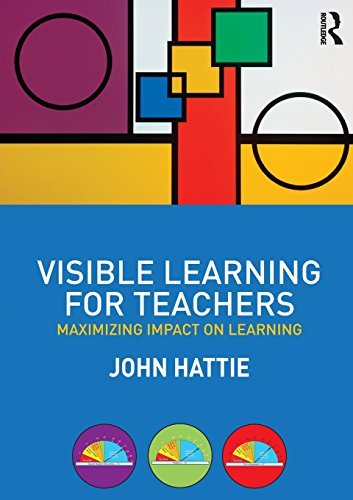Title: Visible Learning for Teachers
Author: John Hattie

In November 2008, John Hattie’s ground-breaking book Visible Learning synthesised the results of more than fifteen years research involving millions of students and represented the biggest ever collection of evidence-based research into what actually works in schools to improve learning.
Visible Learning for Teachers takes the next step and brings those ground breaking concepts to a completely new audience. Written for students, pre-service and in-service teachers, it explains how to apply the principles of Visible Learning to any classroom anywhere in the world. The author offers concise and user-friendly summaries of the most successful interventions and offers practical step-by-step guidance to the successful implementation of visible learning and visible teaching in the classroom.
This book:
- links the biggest ever research project on teaching strategies to practical classroom implementation
- champions both teacher and student perspectives and contains step by step guidance including lesson preparation, interpreting learning and feedback during the lesson and post lesson follow up
- offers checklists, exercises, case studies and best practice scenarios to assist in raising achievement
- includes whole school checklists and advice for school leaders on facilitating visible learning in their institution
- now includes additional meta-analyses bringing the total cited within the research to over 900 comprehensively
- covers numerous areas of learning activity including pupil motivation, curriculum, meta-cognitive strategies, behaviour, teaching strategies, and classroom management.
Visible Learning for Teachers is a must read for any student or teacher who wants an evidence based answer to the question; ‘how do we maximise achievement in our schools?’